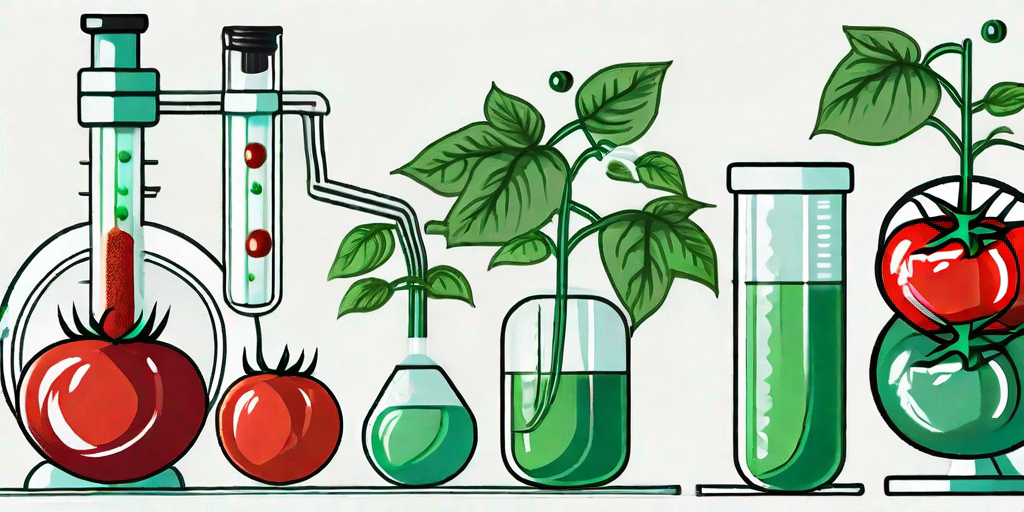
Welcome, fellow tomato enthusiasts! Today, we're diving deep into the world of our favorite red (and sometimes yellow, green, and even purple) fruit. Yes, you heard it right, tomatoes are indeed a fruit! But let's not get sidetracked, we're here to talk about the fascinating science behind the color of tomatoes. So, buckle up and prepare for a juicy ride!
The Science of Color
Before we dive into the tomato specifics, let's take a moment to understand the science of color. Colors are not just a visual treat but a result of complex scientific phenomena. They are the result of light interacting with matter. When light hits an object, it absorbs some wavelengths and reflects others. The wavelengths it reflects are what we perceive as color.
Now, you might be wondering, "What does this have to do with tomatoes?". Well, the color of tomatoes is a result of this very phenomenon. The pigments present in tomatoes absorb and reflect light in a certain way, giving them their characteristic color.
Why are Tomatoes Red?
Now that we've covered the basics, let's get to the meat of the matter. Why are tomatoes red? The answer lies in a pigment called lycopene. Lycopene is a carotenoid pigment that gives tomatoes their red color. It absorbs all the blue and green light, reflecting only the red, making tomatoes appear red to our eyes.
But here's a fun fact: not all tomatoes are red. Tomatoes come in a variety of colors, including yellow, green, orange, and even purple! This is because of the presence of different pigments. For example, yellow tomatoes have a high concentration of another pigment called beta-carotene, which reflects yellow light.
The Role of Lycopene
Lycopene is not just responsible for the red color of tomatoes but also has several health benefits. It is a powerful antioxidant that can protect the body from harmful free radicals. Studies have shown that lycopene can reduce the risk of heart disease and certain types of cancer.
Interestingly, lycopene is more readily available to our bodies when tomatoes are cooked. So, your love for tomato soup and pasta sauce is not just satisfying your taste buds but also doing wonders for your health!
The Color Spectrum of Tomatoes
As mentioned earlier, tomatoes come in a variety of colors. This is due to the presence of different pigments. Let's take a closer look at these colorful varieties:
- Red Tomatoes: These are the most common variety and are rich in lycopene.
- Yellow and Orange Tomatoes: These tomatoes have a high concentration of beta-carotene, which gives them their yellow-orange color.
- Green Tomatoes: These are usually unripe tomatoes. They contain chlorophyll, which gives them their green color.
- Purple and Black Tomatoes: These exotic varieties contain a pigment called anthocyanin, which gives them their dark color.
FAQs
Why are some tomatoes green?
Green tomatoes are usually unripe tomatoes. They contain chlorophyll, which gives them their green color. However, there are also some varieties of tomatoes that remain green even when ripe, such as the Green Zebra.
Are colored tomatoes as healthy as red ones?
Yes, colored tomatoes are just as healthy as red ones. They contain different types of pigments, which have their own set of health benefits. For example, purple tomatoes contain anthocyanin, which has antioxidant properties.
Why do cooked tomatoes have more lycopene?
Cooking tomatoes breaks down the cell walls, releasing more lycopene. Additionally, lycopene is fat-soluble, so it is more readily absorbed by the body when consumed with a little bit of fat, like olive oil.
Conclusion
So there you have it, folks! The color of tomatoes is not just a feast for the eyes but a result of complex scientific phenomena and a sign of the various nutrients they contain. Whether you like them red, green, or purple, tomatoes are a healthy and delicious addition to your diet. So, the next time you bite into a juicy tomato, take a moment to appreciate the science behind its vibrant color!











